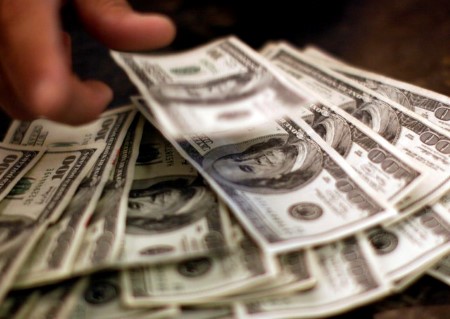




Monthly Economic Update: One for the road
 DOWNLOAD
DOWNLOAD

Inflation Update: Still low, still slow
 DOWNLOAD
DOWNLOAD

Philippines Trade Update: Exports momentum continues
 DOWNLOAD
DOWNLOAD


Rising US junk bond yields lure investors as fears of severe recession ebb

April 27 (Reuters) – A segment of US junk-grade bonds yielded the highest returns so far this year in a sign that Wall Street is more willing to take on riskier investments with higher returns, as fears of a severe economic downturn abate.
Returns on CCC-rated debt jumped to more than 6% so far this year from a 16.3% tumble last year, according to data from Morningstar Direct. Although the bonds with that rating are considered to be among the riskiest, their returns were the best across all rated categories this year.
Credit rating agency Fitch says CCC denotes a very low margin for safety and a high level of default risk.
Investors turned to such risky bets in their quest for higher returns as they hoped for a milder recession, if there was one, better-than-feared corporate earnings and a limited fallout from the failure of two large regional banks.
“CCCs have been the strongest performing segment in fixed income,” said Manuel Hayes, senior portfolio manager at Insight Investment.
Bonds rated B and BB followed closely, with returns of 4.1% and 3.7% so far this year. Their performance was still better than those rated investment grade, according to Morningstar data.
Although rated junk, B and BB are considered less risky than CCC.
In other signs that the market tempered some of the risks expected earlier, the option-adjusted spread (OAS) on the ICE BofA US High Yield Index, a commonly used benchmark for the junk bond market, ticked down to 463 bps on April 26 from 522 bps a month back, according to Refinitiv.
To be sure, downgrades and defaults may increase if borrowing costs become prohibitive for poorly rated companies dependent on the ability to issue new debt and refinance existing debt cheaply, said Jeremy Wager-Smith, fixed income portfolio associate at San Francisco-based wealth and investment management firm Bailard.
He expects CCC spreads to widen as corporate fundamentals and earnings deteriorate among vulnerable issuers.
Still, some analysts believe that strong fundamentals of most corporate issuers will lead to increased downgrades rather than high levels of defaults in the event of a recession.
“From a credit selection perspective, we still think it makes sense to focus on strong companies and defensive sectors, whether in investment grade or high yield,” said Bishop Jordan, senior credit analyst at Eagle Asset Management.
Investment grade debt on the Federal Reserve Bank of New York’s corporate bond distress index (CMDI) showed more stress than their high-yield counterparts during most of the past year as the Fed delivered the fastest pace of interest rate hikes in decades.
The CMDI was launched last year, with historical data from 2005. It is designed to help identify signs of market distress and is keenly watched by investors.
(Reporting by Mehnaz Yasmin in Bengaluru; Editing by Alden Bentley and Anil D’Silva)
This article originally appeared on reuters.com





 By Reuters
By Reuters